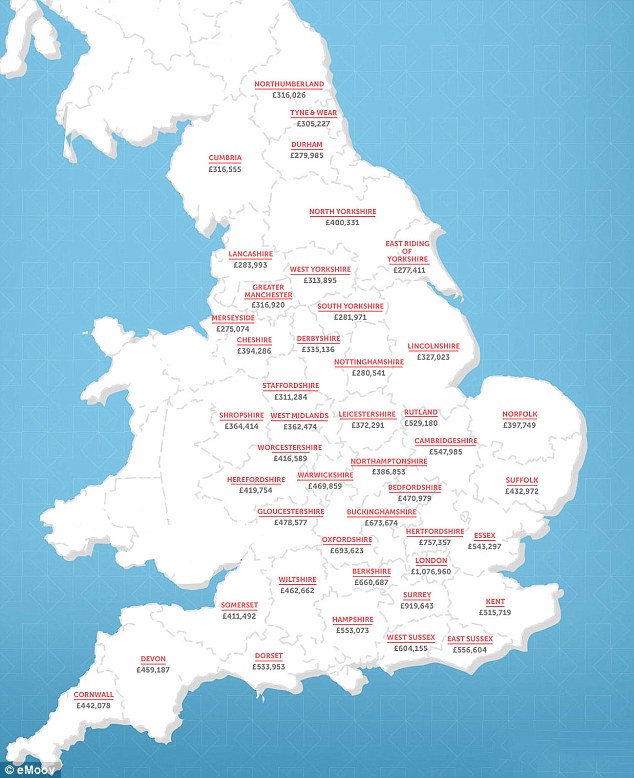The typical value of a home in England will be more than £450,000 in 2030. New research is mapping out what house prices could possibly look like throughout the UK.
However, in London you may be looking at an astounding amount of £1million for an average property.
The predictions on the map from estate agents eMoov are centered on the 84 per cent upsurge in house prices in 2000 and 2015 and has been applied to the following 15 years.
It has been confessed that this was a simple projection of what could happen but it was done as a warning of the consequences rather than a celebration of the potential rise.
If this prediction price growth plays out, average values in England will reach £457,433 whilst in Wales they will rise to £307,712 and 297,222 in Scotland.
At the peak of this rise is London’s Kensington and Chelsea which will become the most expensive places to live in where current values of £1.9million could potentially hike up to £3.4million.
Russell Quirk, of eMoov, said: “This map highlights just how dangerous this current artificial inflation of the market could be in the long run, it’s not just London that will become beyond the reach of the average UK homebuyer, the issue will spread the length and breadth of England, Scotland and Wales.’”
Apart from London, counties in England that will also have an average house price of more than £500,000 will include Dorset, East and West Sussex, Kent, Essex, Berkshire, Surrey, Oxfordshire, Hertfordshire, Buckinghamshire, Cambridgeshire and Rutland.
The only places in England that are likely to have an average house price of less than £280,000 by 2030 include Merseyside at £275,074, East Riding of Yorkshire at £277,411 and Durham at £279,985.
In the past 15 years, Britain has had a property boom and bust following the credit crisis where many overloaded homeowners were evicted from their homes after losing their jobs.
According to Mr Quirk, a property bubble could burst again, he said: “The past 15 years have seen extreme growth in the price commanded for UK property, as well as a crash as a direct result of this inflated growth. Although this research is only a projection of what may happen by 2030, it is safe to assume that with prices continuing to spiral beyond affordability, history could well repeat itself.
“Although rising prices are always good news for current homeowners, it’s extremely worrying to look at the difficulty many have in getting on the ladder at the moment, let alone with a price jump of 84 per cent by 2030.”
Separate research displays that the typical house price has amplified 5.1 times faster than average weekly incomes in the past five years.
Resolution Foundation said: “House prices have risen by 36 per cent since April 2011 while average weekly earnings have risen by only 7 per cent during the same period.”
Lindsay Judge, Senior Policy Analyst at the Resolution Foundation, said: “Runaway house prices have had a clear feed through to living standards in recent years. Most obviously it has priced people out of home-ownership, pushing significant numbers into the private rental market.
“But rampant house prices inflation isn’t just a problem for wannabe home-owners. It has increased the stock of mortgage debt, and fuelled demand for renting that is driving up costs there too. Ultimately we all pay for house price inflation by spending a greater share of our incomes on housing.”




































